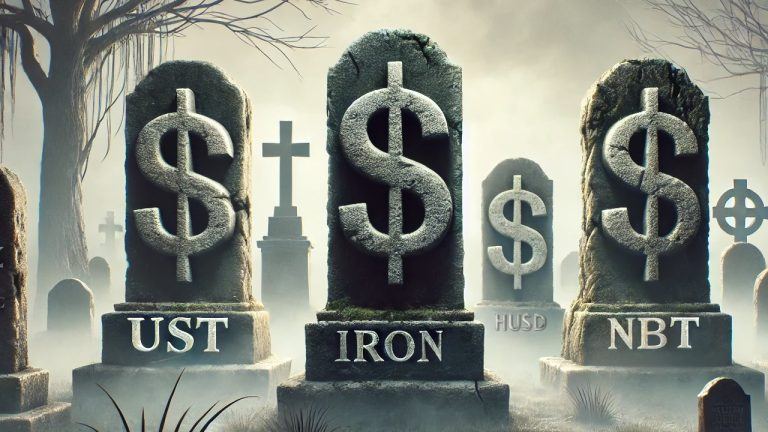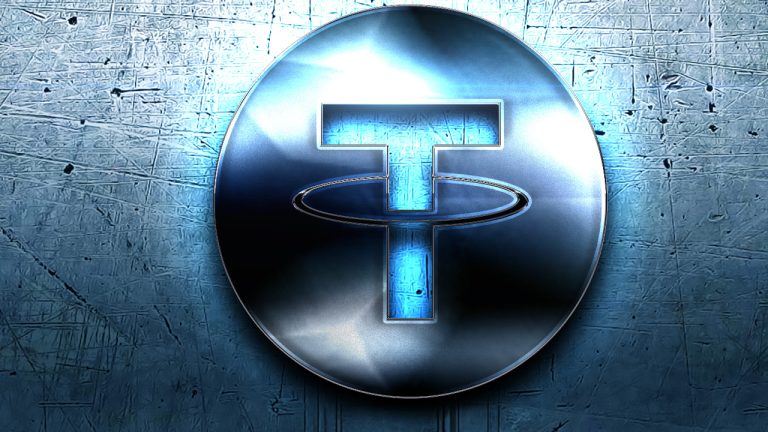 We nearly doubled our selection of margin collateral currencies, which now include AAVE, DOGE, PEPE, SHIB, WIF, XRP & more!
We nearly doubled our selection of margin collateral currencies, which now include AAVE, DOGE, PEPE, SHIB, WIF, XRP & more!
The post Kraken adds 15 new margin collateral currencies appeared first on Kraken Blog.
 Stablecoins, the cryptocurrencies pegged to fiat currencies like the U.S. dollar to keep their value steady, can still face failures. Several well-known examples demonstrate that maintaining stability is more challenging than it appears. So, how does something designed to be ‘stable’ unravel? A Historical Review of Stablecoin De-Pegging Incidents There’s no doubt that these stablecoins […]
Stablecoins, the cryptocurrencies pegged to fiat currencies like the U.S. dollar to keep their value steady, can still face failures. Several well-known examples demonstrate that maintaining stability is more challenging than it appears. So, how does something designed to be ‘stable’ unravel? A Historical Review of Stablecoin De-Pegging Incidents There’s no doubt that these stablecoins […]

Ethena’s synthetic stablecoin USDe can benefit from incorporating UStb during periods of weak funding conditions, Ethena Labs said.
Ethena Labs, developer of the decentralized stablecoin protocol Ethena, is working on a new stablecoin backed by a tokenized fund from BlackRock.
Ethena Labs took to X on Sept. 26 to announce its new stablecoin project, UStb (USTB), which will be built in partnership with major Bitcoin investor (BTC) BlackRock and the digital securities platform Securitize.
The stablecoin will be backed by BlackRock’s tokenized BlackRock USD Institutional Digital Liquidity Fund (BUIDL), which offers a stable value of $1 per token.
 BA Labs, an adviser to Sky, formerly known as Makerdao, has decided to stop recommending any additional parameter changes regarding the offboarding of wrapped bitcoin (WBTC) collateral. The move follows statements from Bitgo’s CEO Mike Belshe and a vote from Sky community members. Sky Adviser BA Labs Recommends Pausing WBTC Offboarding Changes BA Labs’ decision […]
BA Labs, an adviser to Sky, formerly known as Makerdao, has decided to stop recommending any additional parameter changes regarding the offboarding of wrapped bitcoin (WBTC) collateral. The move follows statements from Bitgo’s CEO Mike Belshe and a vote from Sky community members. Sky Adviser BA Labs Recommends Pausing WBTC Offboarding Changes BA Labs’ decision […]

BA Labs, adviser to DeFi lender Sky, says concerns about Justin Sun’s role in Wrapped Bitcoin custody are resolved. A new vote is set for Oct. 3.
Decentralized finance (DeFi) pioneer Sky, formerly Maker, is reconsidering its plan to offboard Wrapped Bitcoin (WBTC) as collateral for its lending protocol after receiving a new recommendation from one of its key advisers, BA Labs.
On Sept. 24, BA Labs recommended pausing the WBTC offboarding plan following a lengthy conversation with BitGo co-founder Mike Belshe on Sky’s governance forum.
The move follows BitGo’s clarifications about changes in management or custody of WBTC, control of the signing keys, and commitment to give advance notice of changes.

The project aimed for speed, privacy and legal compliance while using highly accessible and desirable US Treasury bonds as a collateral asset.
Blockchain solutions provider Digital Asset and the Depository Trust & Clearing Corporation (DTCC) have completed their US Treasury Collateral Network pilot project on the Canton Network. The project brought together 26 market participants to carry out 100 transactions.
The project used tokenized “digital twins” of Treasury bonds (USTs) in four use cases using the Canton Network Global Synchronization and DTCC LedgerScan features to demonstrate transaction flows and a case of default.
In the first use case, a digital twin was created of real-world assets (USTs) for an investor and then set aside. The digital twin was registered with the central security depository. The digital twin could be used for the same purposes as the asset itself — trading, lending or collateral, for example.
 Mercado Bitcoin, one of the largest Brazil-based cryptocurrency exchanges, has launched a loan product allowing users to receive credit in Brazilian reais secured by crypto collateral. The credits will be limited to 30% of the total held in crypto in the exchange, and liquidations will not be automatically executed, being examined on a case-by-case basis […]
Mercado Bitcoin, one of the largest Brazil-based cryptocurrency exchanges, has launched a loan product allowing users to receive credit in Brazilian reais secured by crypto collateral. The credits will be limited to 30% of the total held in crypto in the exchange, and liquidations will not be automatically executed, being examined on a case-by-case basis […] Stablecoin issuer Tether has slammed the”baseless” claims that it illegally liquidated Celsius Network’s bitcoin collateral. Tether accused the crypto lender of trying to “improperly impose the costs of Celsius’ mismanagement and failure on Tether.” Shameless Litigation Stablecoin issuer Tether Holdings Ltd. has rejected the “baseless” claims by the bankrupt crypto lender Celsius Network that the […]
Stablecoin issuer Tether has slammed the”baseless” claims that it illegally liquidated Celsius Network’s bitcoin collateral. Tether accused the crypto lender of trying to “improperly impose the costs of Celsius’ mismanagement and failure on Tether.” Shameless Litigation Stablecoin issuer Tether Holdings Ltd. has rejected the “baseless” claims by the bankrupt crypto lender Celsius Network that the […] The Central Bank of Nigeria has barred the use of foreign exchange as collateral for local currency loans. In its April 8 letter addressed to banks, the CBN warned of severe consequences for banks that fail to comply with the latest directive. Halting the Slide of the Naira Hamstrung by ongoing shortages of U.S. dollars, […]
The Central Bank of Nigeria has barred the use of foreign exchange as collateral for local currency loans. In its April 8 letter addressed to banks, the CBN warned of severe consequences for banks that fail to comply with the latest directive. Halting the Slide of the Naira Hamstrung by ongoing shortages of U.S. dollars, […]
MakerDAO’s Rune Christensen says appropriate regulation will see stablecoins become mainstream, but the real opportunity is in decentralized stablecoins.
Decentralized stablecoins may eventually dominate the stablecoin market, so long as crypto “ends up living up to its potential,” says Rune Christensen, the co-founder of DeFi pioneer MakerDAO.
Speaking to Cointelegraph’s Andrew Fenton at Token 2049 in Singapore, Christensen aired his thoughts on the future of decentralized stablecoins such as Dai (DAI) and their role in the wider crypto economy.
They discussed a presentation by Castle Island Ventures partner Nic Carter at the TOKEN2049 conference in Singapore in which he said that interest-bearing stablecoins could become 30% of the market within two years.
Christensen agreed but said it would probably depend on the macro situation, adding “if high inflation high rates continue, then probably,” stablecoin dominance will increase.

When asked whether a decentralized stablecoin could compete with its centralized cousins, he replied:
“Easily I mean, I think if the space ends up living up to its potential, then decentralized stablecoins will be the entire market like centralized stablecoins would be the edges that connect us to like the legacy system.”
He added that if crypto “delivers” and becomes regulated, centralized stablecoins will become more mainstream. However, the real potential is in decentralized stablecoins, he suggested:
“I think the real killer advantage of decentralized stablecoins, run by actual data like Maker, is this ability to gamify your savings.”
Related: MakerDAO publishes 5-phase roadmap featuring funding for open-source AI projects
In mid-2022, Christiansen proposed MakerDAO’s “Endgame Plan”. The plan proposes making DAI a free-floating asset, initially collateralized by real-world assets (RWA).
There will be a three-year period when DAI remains pegged to the dollar. During this period, the protocol will double down on RWA to accumulate as much Ether (ETH) as possible which increases the ratio of decentralized collateral.

Rune believes that Maker has built a very solid and stable foundation but it has been overtaken by scammy and illegitimate projects.
He wants to try and gamify to make the protocol fun and more appealing to younger users. “It's what people want,” he said before adding, “Things are designed like a game and that's the kind of interface they will use.”

Magazine: Web3 Gamer: GTA owner joins Web3, Bitcoin casino, Sunflower Land review